Lampriomorpha: Opahs
I'd say something about Lampriomorpha, but it only contains the order Lampriformes, so let's talk about that. These fishes don't have spines in their fins, and the maxilla is protruded with the protractile premaxilla (different than the usual ligamentous attachments). The lamprids and veliferids have deep bodies and well-developed skeletons, while the rest have ribbonlike bodies with dorsal fins extending the whole length; they are known as bathysomes and taeniosomes, respectively. Let's jump to it!
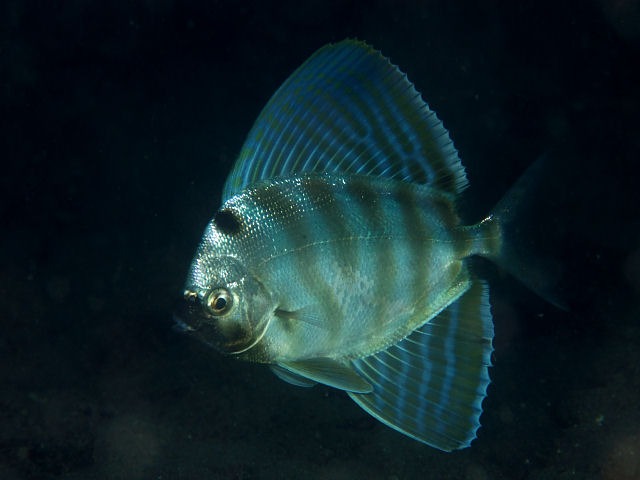
By Izuzuki (http://www.izuzuki.com/) [CC BY-SA 3.0], via Wikimedia Commons
Veliferidae: Velifers
This family contains two monotypic (one-specied) genera, Velifer hypselopterus and Metavelifer multiradiatus. These fishes have long dorsal and anal fins, and the swimbladder bifurcates (AKA splits) around the GI tract to extend posteriorly past the anus. Unlike most other lampriforms, they tend to live closer to shore.
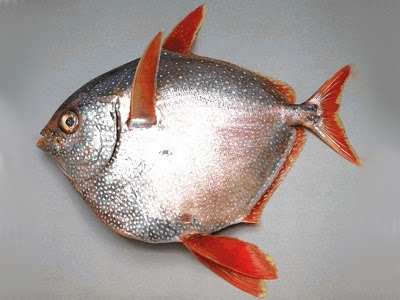
Lampridae: Opahs
There is one genus, Lampris, containing two species. Opahs are brightly colored, giving rise to the scientific name; "lampr-"" is Greek for "bright."" They have a deep and compressed body, with a high lateral line arching with the dorsal curve of the body. They are large, growing up to 1.8m and living in open water. The opah recently made the news as being the first "warm-blooded" fish, meaning that it actually generates heat via its muscles to maintain a body temperature above that in the surrounding waters (read the paper here). Many other fishes have been described as being "warm-blooded" (sharks and tunas) but they only use warming mechanisms locally in the muscle and do not circulate the warmed blood throughout the body.
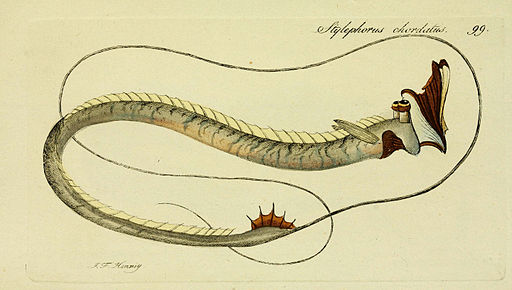
By Bloch, Marcus Elieser; Hennig, J. F.; Schneider, Johann Gottlob [CC BY 2.0 or Public domain], via Wikimedia Commons
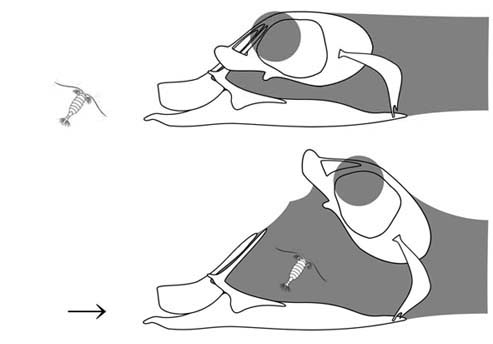
Stylephoridae: Tube-Eyes, Thread-Tails
There is one species, Stylephorus chordatus. The first to demonstrate the taeniosome body plan, it has a ribbonlike body with a dorsal fin extending the length of the body and a caudal fin with two elongate rays making up the lower section. They eyes are telescopic, pointing upwards or forwards, as the fish swims vertically with the head upwards. It has a tubular mouth with which it sucks up water (expanding the cavity 40x) to trap copepods.
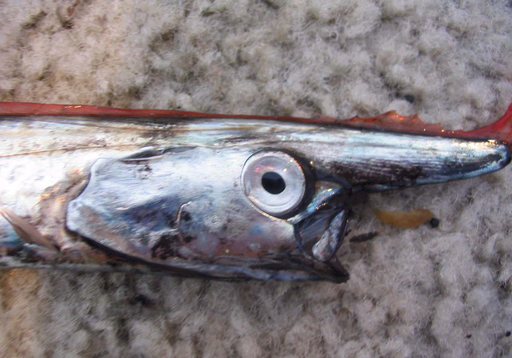
By Eric Woroch, NMFS-PIRO Observer Program [Public domain], via Wikimedia Commons
Lophotidae: Crestfishes
These skinny fishes have a long dorsal fin extending past the tip of the snout all the way to the tail (but not connected to the caudal fin). Crestfishes have swimbladders as well as an inksac, which it can empty into the cloaca when threatened. They can grow up to 2m, pretty large.
Radiicephalidae: Tapertails
There is only one species, Radiicephalus elongatus. The body plan is similar to those previously mentioned, with the tail tapering to a filament at the end. Similar to lophotids, the tapertail contains a brown inksac which it empties through the cloaca when threatened by predators.
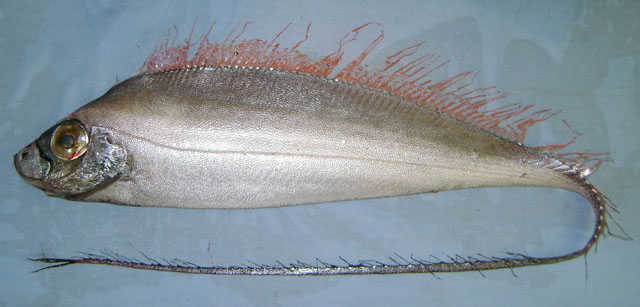
By Hamid Badar Osmany [CC BY 3.0], via Wikimedia Commons
Trachipteridae: Ribbonfishes
These fishes are a little weird when it comes to body planning. They have a dorsal fin originating behind the snout and the pelvic fins are made up of long "ribbons." The caudal fin only has an upper lobe, which is angled at 90 degrees from the body. These fishes lack ribs and have alterations in their body plan as they grow to adulthood (growing to 1.7m).
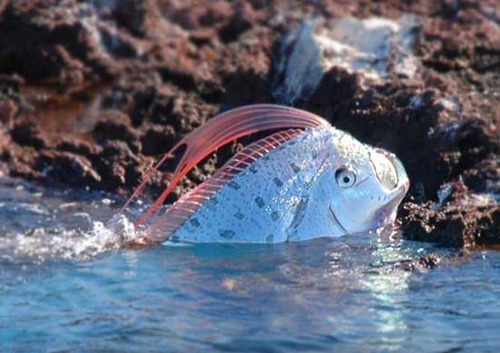
Regalecidae: Oarfishes
The infamous oarfishes are considered to be the origin for many sea serpent stories due to their size and rarity. The giant oarfish, Regalecus glesne, is known to reach lengths of 8-11m, making it the largest living bony fish. The dorsal fin originates behind the snout with the first few rays being large and bright red. They have an elongate pelvic fin with one ray and lack teeth and swimbladders. To see an amazing video of live oarfishes with great narrations/explanations, click HERE.
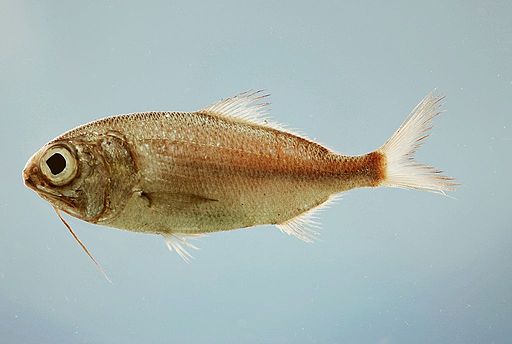
By SEFSC Pascagoula Laboratory; Collection of Brandi Noble, NOAA/NMFS/SEFSC. (NOAA Photo Library: fish4396) [CC BY 2.0 or Public domain], via Wikimedia Commons
Polymixiomorpha: Beardfishes
There is only one order, Polymixiiformes, with only one family, Polymixiidae, with only one genus, Polymixia...containing 10 species. Somehow it's special enough to warrant its own superorder. It gets its name from the pair of barbels below the jaw (hyoid barbels). There's not much else to say; they do have some unique osteological features which helps define them in this special group.